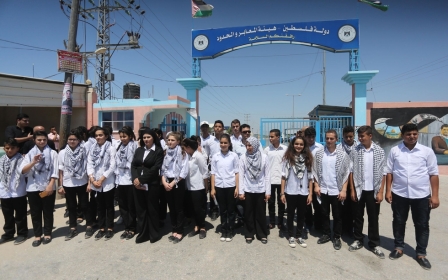
In pictures: Gaza's 'dreamers' look out from the rubble
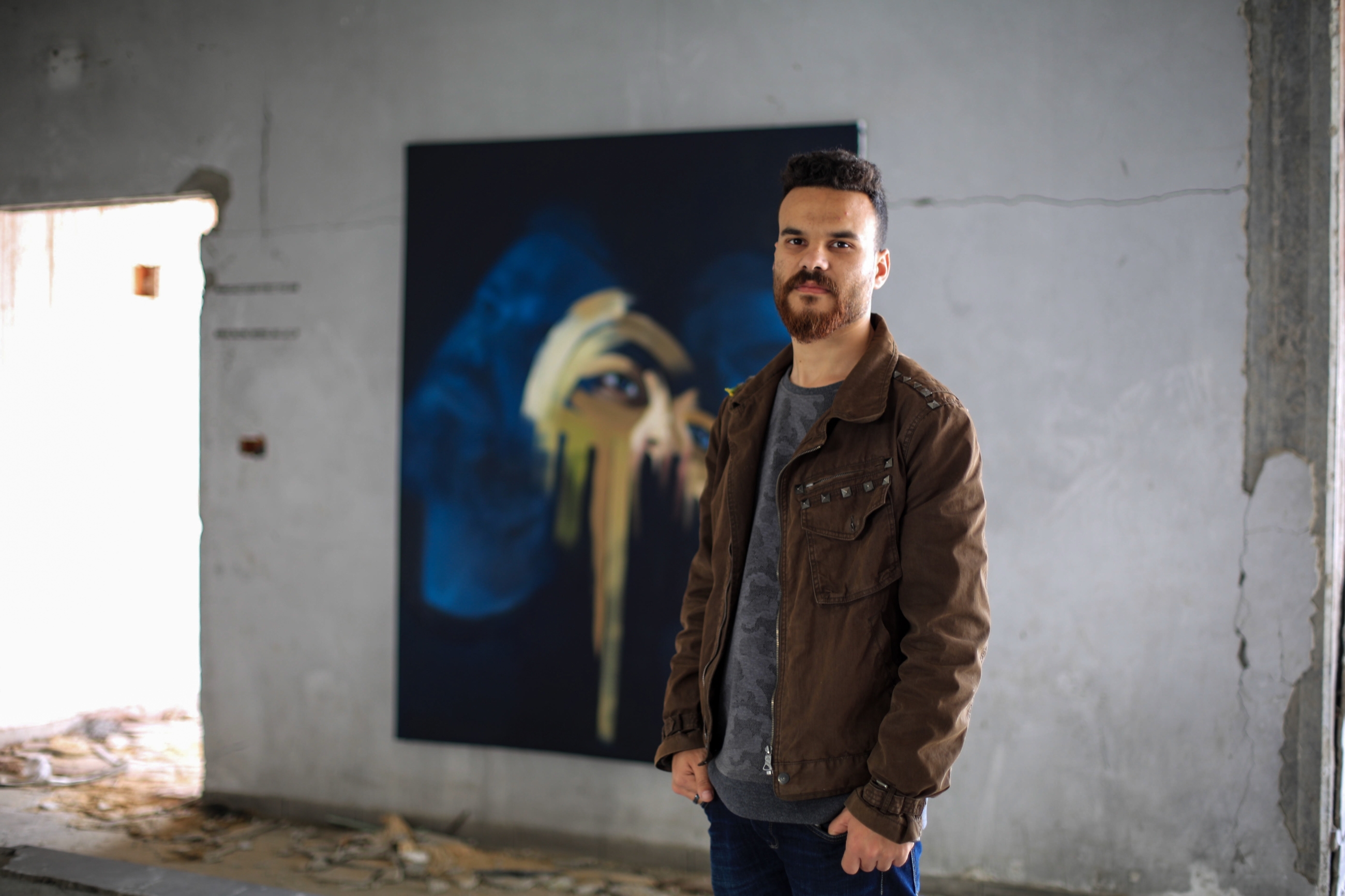
The Italian compound on Al-Nasr Street, Gaza City, was one of many buildings lost in Israel's 2014 assault on the strip. Once a residential and commercial complex, the derelict tower has been given new life by Ali Jabaly, a 26-year old graphic artist from Gaza, who has turned the destroyed building into an art gallery. (MEE/Mohammed al-Hajjar)

Built at the beginning of the century, the commercial complex struggled during its first few years, which coincided with the Second Intifada. It then became a residential building and the site for a number of cafes. But on 25 August 2014, during the 50-day war, the tower was subjected to heavy Israeli bombardment. (MEE/Mohammed al-Hajjar)

Dreamers Among the Rubble took Jabaly six months to complete. Four murals painted on the walls of the Italian compound overlook the street, allowing the art exhibition to be seen from the outside. They show the faces of the occupation, the dreamers among the rubble of the destroyed building. (MEE/Mohammed al-Hajjar)
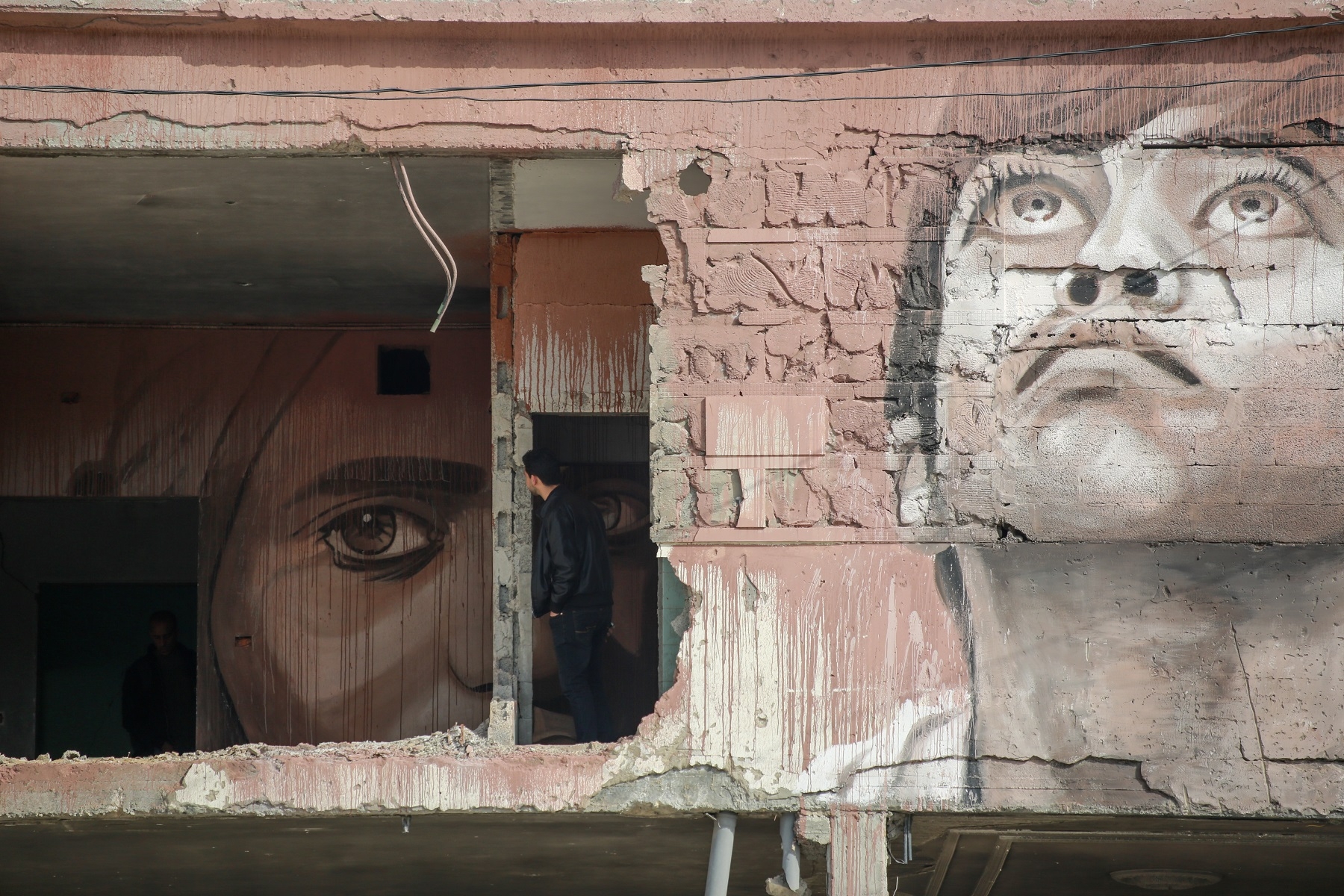
Jabaly, who says the exhibition is a "true reflection of the situation in Gaza", studied interior design and has been painting since childhood. For the artist, the distinctive style of the painted faces of the Palestinians expresses not only this reality, but his own inner feelings. (MEE/Mohammed al-Hajjar)
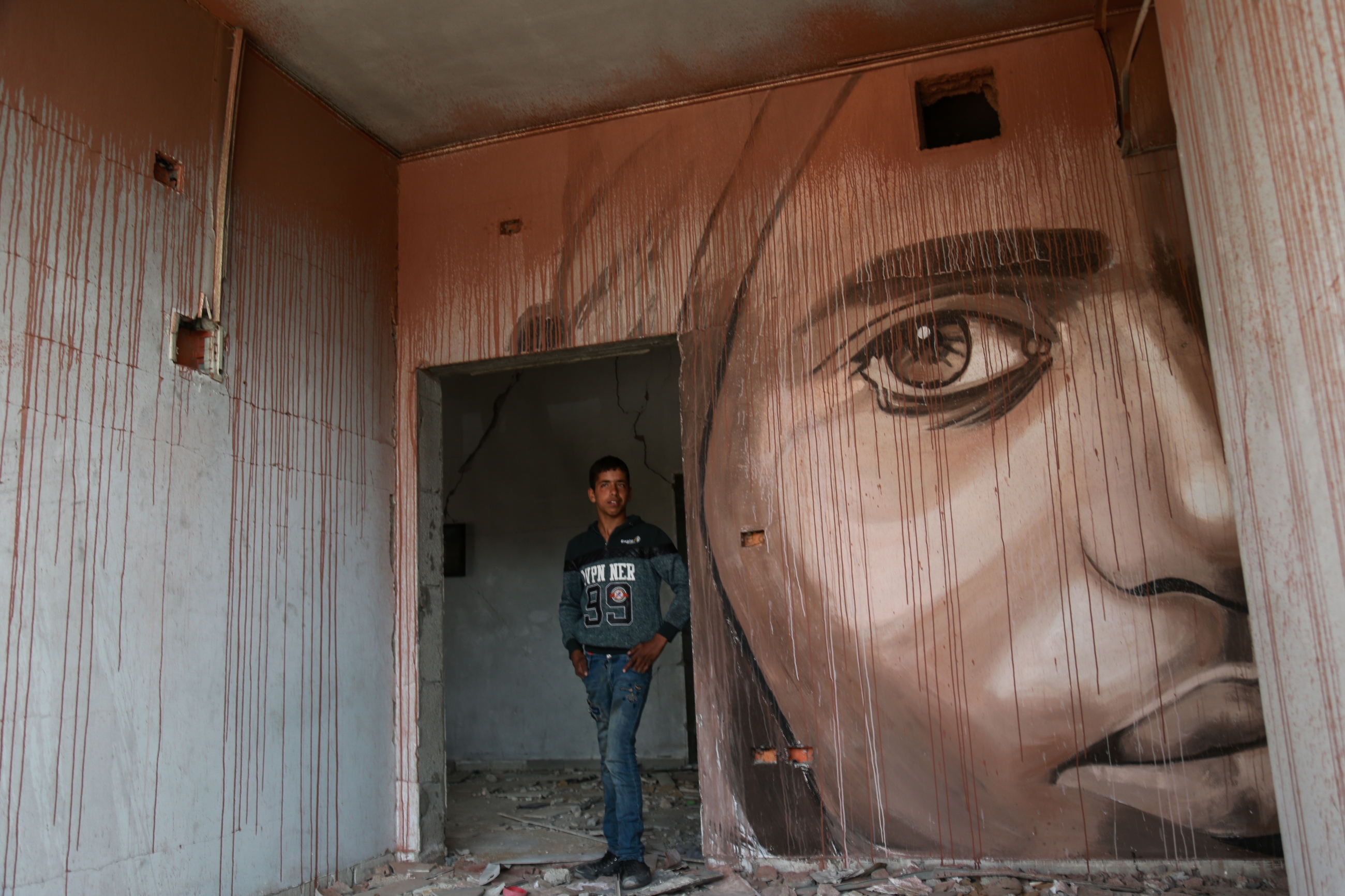
In the interior part of the compound, Jabaly painted six portraits depicting the same subject. The choice of the Italian compound was a way of transforming a bombed out space and giving some life to Gaza's environment. (MEE/Mohammed al-Hajjar)

Jabaly says he wanted to express how the people he painted were not created for war and destruction, but to live for the future. In the 2014 war, over 2,200 Palestinians were killed by the Israeli army, including 526 children. (MEE/Mohammed al-Hajjar)
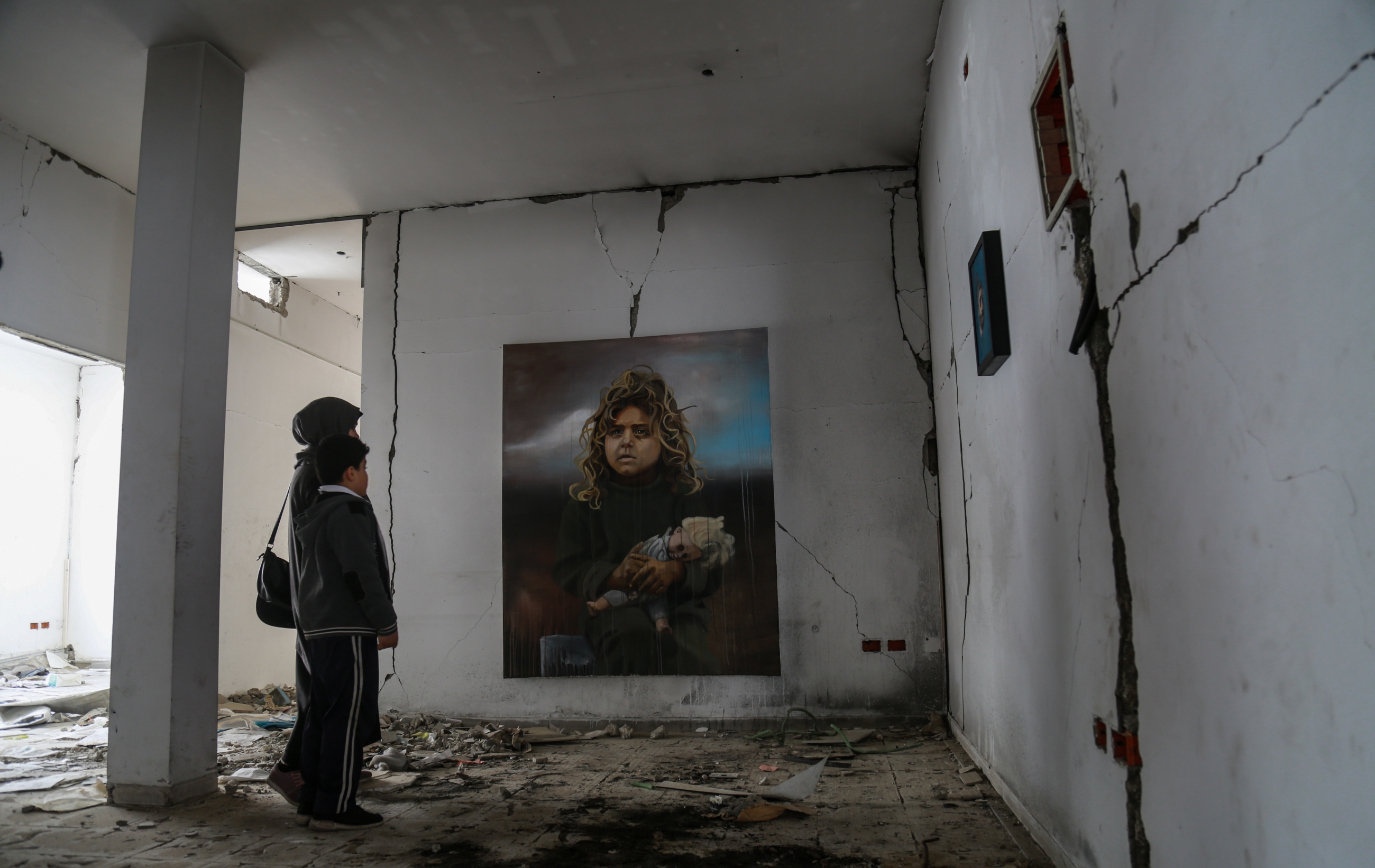
“Some people do not understand our language or our culture, but the expressions and the strength of the faces are enough to reach our suffering. The faces do not need an interpreter,” he says. (MEE/Mohammed al-Hajjar)
Middle East Eye propose une couverture et une analyse indépendantes et incomparables du Moyen-Orient, de l’Afrique du Nord et d’autres régions du monde. Pour en savoir plus sur la reprise de ce contenu et les frais qui s’appliquent, veuillez remplir ce formulaire [en anglais]. Pour en savoir plus sur MEE, cliquez ici [en anglais].




